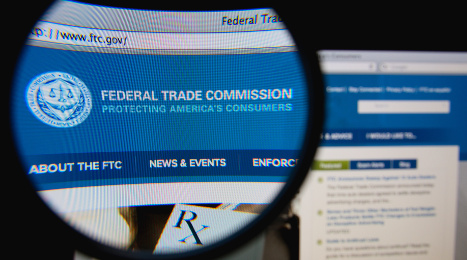As we flipped the calendar into 2017 this month, it was time for New Year’s resolutions once again. Maybe this year you’re planning to finally buy that gym membership or cut out fatty foods. Or maybe you’ve resolved to step up your game at work and improve your close percentage.
These are all noble goals … but I bet that in a couple of months, most of us will have slid back into our old habits.
However, there’s one resolution you can make this year that will be easy to stick to.
That’s because making this change will drive results that are too good to pass up. And that change is to increase your certified pre-owned sales in 2017.
CPO sales soared to another record high in 2016, and dealers at every level can find ways to get their numbers even higher this year. If you haven’t embraced a CPO strategy yet, now’s the time to get started.
If your CPO sales are sluggish or labor-intensive, now’s the time to get your program off the ground. If you’re already in the running for CPO Dealer of the Year, now’s the time to take your business to the next level.
But why CPO — and why now? The benefits of resolving to increase CPO sales are too numerous to list, but here are six to start.
1. CPO builds consumer trust
Consumers know that when they choose CPO, they’re choosing a vehicle they can rely on. That’s because CPO vehicles are held to a much higher standard than typical used vehicles. They’re inspected and repaired until they’re brought to like-new condition. And by completing and documenting the repairs, you can dramatically improve customers’ perception of your dealership.
When consumers see you’re willing to put in the time and effort to care for these vehicles, they’ll know you put their needs first — which increases trust and transactional satisfaction.
2. CPO provides peace-of-mind
For an overwhelming majority of consumers, CPO vehicles are an attractive option. According to a recent Autotrader consumer survey, 82 percent of used-vehicle shoppers felt favorably about CPO.
The reason? Today’s shoppers are risk-averse. They don’t want to purchase a vehicle they can’t rely on, or one that might break down at any moment. Choosing a CPO vehicle helps consumers avoid that risk.
No surprise, then, that 64 percent of CPO consumers list peace-of-mind among their top deciding factors. What might surprise you, though, is that shoppers are willing to pay a sizable premium for that peace of mind. $2,714 more per vehicle, to be exact!
3. CPO ensures financial security
Although no one wants to think about the worst-case scenario with their vehicles, today’s consumers could be one catastrophic incident away from financial hardship. According to a recent survey from Bankrate.com, 63 percent of Americans don’t have enough savings to pay for a $500 or $1,000 emergency. In other words, if the average American experiences car failure, paying for repairs will be a major challenge.
Consumers are looking for ways to stay financially secure in case of an emergency. And CPO vehicles’ extended service coverage delivers that security — a major selling point.
4. CPO directly affects consumer loyalty
Want to increase repeat sales and consumer loyalty? The key is improving how consumers feel about your dealership. And offering CPO vehicles is one of the best ways to improve their perception. Cox Automotive’s 2016 CPO Study reports that 93 percent of CPO consumers were very or extremely satisfied with their vehicle.
And that level of satisfaction translated into increased loyalty. Seventy-eight percent were likely to repurchase from the same brand, and 69 percent were likely to repurchase from the same dealership. CPO vehicles won’t just help you close the sale today — they’ll help you earn repeat sales tomorrow, too.
5. CPO warranties are difference-makers
One of the biggest differentiators of CPO vehicles is the addition of a warranty. These warranties give consumers peace-of-mind that a repair facility or licensed mechanic has inspected the vehicle and brought it up to minimum standards. This improves consumers’ confidence in their vehicle purchase.
That’s why, after make and model, the warranty is the most important feature for today’s consumers. Fifty-seven of used-vehicle shoppers end up choosing a CPO vehicle because of its warranty. So use this key differentiator to your full advantage!
6. CPO is where your consumers are!
The CPO market is big, and it’s getting bigger every day. It’s estimated that 3 million consumers are currently interested in CPO. And with around 3 million more vehicles coming off-lease in 2016, the CPO market could be as large as 5.2 million consumers by 2020. That’s 5.2 million reasons CPO should be a cornerstone of your dealership’s strategy.
Because consumer demand for CPO vehicles is so high, it creates a major opportunity for you to increase your profit margin on used vehicles — all while improving consumer satisfaction and loyalty.
There are countless reasons why stepping up your dealership’s CPO focus in 2017 is a smart idea. CPO vehicles offer unique value to consumers, and overall demand has never been higher. Making these compelling vehicles a bigger part of your overall strategy will help you deliver more value to consumers, while improving your profit margin on every vehicle.
So resolve to boost your CPO sales numbers in 2017 — because this resolution is worth sticking to!
Rob Christman is a 15-year veteran of the auto industry and has worked for top brands such as Autotrader and Kelley Blue Book in both corporate product development and field sales positions. Rob has presented at many industry conferences, most recently at the 2016 Used Car Week CPO Forum.
Al Katz has been with Mercedes-Benz USA for 18 years and served in various managerial roles throughout his nearly two decades with the company.
And on Jan. 1, he became the new general manager of pre-owned, remarketing & fleet operations for Mercedes.
That includes the popular certified pre-owned segment, and in an emailed Q&A, Katz shared some of his targets for CPO.
“Our primary goal is to deliver an exceptional customer experience by providing the industry leading CPO program for the No. 1 luxury import brand in the U.S,” Katz said.
“We want to grow Mercedes-Benz share of voice in an extremely competitive pre-owned marketplace to increase awareness of the value and affordability of Mercedes-Benz and the benefits of certified pre-owned, including a comprehensive inspection by factory trained technicians, genuine Mercedes-Benz parts and our industry-first unlimited mileage warranty,” he said.
“If the customer is thrilled with their ownership experience, loves their car and recognizes the value in Mercedes-Benz products, the likelihood of brand retention increases. By achieving these goals, we optimize residual values, which aids in the success of selling new Mercedes-Benz vehicles.”
During his time with MBUSA, Katz has been a market manager, a region aftersales manager for five years, a region pre-owned manager for two years and area manager for five years. For all of those posts, he was based out of the Central Region in Chicago.
For the past year-and-a-half, Katz has been the department manager of retail vehicle distribution at the Atlanta headquarters.
He enters his new position following Mercedes’ best-ever year in the CPO segment, according to Autodata Corp. The company sold 123,134 certified vehicles last year, a 2.3-percent improvement.
“We are constantly reviewing ways to enhance our CPO offerings — and making sure our dealers are in position to ensure retail success. Our greatest opportunity is creating awareness to inform prospective clients of the value proposition that Mercedes-Benz vehicles offer, being affordable to own and operate,” Katz said.
“We are creating this awareness with our comprehensive media plan which covers traditional mediums and is expanding into more contemporary communications channels. Additionally, we offer ongoing training for our dealerships on the benefits of CPO for both dealers and customers,” he said.
“In summary, Mercedes-Benz certified pre-owned is in an excellent position for continued success in this competitive marketplace,” Katz said. “The momentum driving this legendary brand is three-fold: sensational products, professional and engaged dealer partners, and a CPO warranty that provides unlimited mileage and unlimited confidence to our customers.”
Autotrader has come out with its top picks for certified pre-owned deals in January.
"Shoppers who want to start 2017 off with a smart vehicle purchase can easily do so by choosing any of these CPO offers in January," said Autotrader executive editor Brian Moody. "CPO is a popular category for car buyers on a budget, helping consumers get a high-quality vehicle at a great price."
Autotrader editors' top January CPO deals are as follows:
— Audi's CPO program provides an exceptional warranty, says Autotrader. It includes up to six years or 100,000 miles of bumper-to-bumper coverage. This month, Audi is also offering qualified shoppers CPO Audi vehicles from model years 2013–2015 at interest rates as low as 1.9 percent for up to 60 months.
— Cadillac's CPO program has bumper-to-bumper coverage for up to six years or 70,000 miles, which includes zero deductible, roadside assistance and full warranty transferability to subsequent owners. In January, qualified shoppers can receive 0.9 percent interest for up to 36 months.
— Hyundai's CPO program’s warranty is the best in the business, according to Autotrader. Hyundai offers five years or 60,000 miles of bumper-to-bumper coverage and 10 years or 100,000 miles of powertrain protection. Also this month, it's extending low interest rates on the Elantra and the Sonata. For up to 48 months qualified shoppers can get 0.9 percent interest.
— Land Rover's CPO program has a warranty encompassing bumper-to-bumper coverage for up to seven years or 100,000 miles. For qualified shoppers, interest rates are as low as 0.9 percent for 24 months, or 1.9 percent for up to 60 months. Additionally, all month Land Rover is offering several low-interest deals in especially on 2013–2015 models, according to Autotrader.
— Kia's CPO program delivers 10 years or 100,000 miles of powertrain protection and an extra year of bumper-to-bumper coverage after the factory warranty expires. January’s qualified buyers purchasing CPO models of the Sorento or Optima receive 0.9 percent interest for up to 36 months.
— Mazda's CPO program offers two compelling warranties, says Autotrader. The first has powertrain protection for up to seven years or 100,000 miles, and the second adds another year to the original bumper-to-bumper warranty. Mazda is also offering qualified shoppers in January, 1.49 percent interest for up to 36 months.
— Toyota's CPO program also offers shoppers two warranties. The brand’s bumper-to-bumper plan extends the original factory warranty by one year or 12,000 miles. The other warranty provides up to 7 years or 100,000 miles of powertrain coverage. Also, qualified shoppers can receive 1.9 percent interest on CPO Camry models for up to 60 months all month long.
— Volvo's CPO program is among the very best, says Autotrader. Volvo offers seven years or 100,000 miles of bumper-to-bumper coverage. Throughout the month, qualified shoppers can take advantage of a special offer from the brand and receive 0.9 percent interest for up to 24 months.
Used-car sales are predicted to do well in 2017, following what was a record year for used-car sales, according to two automotive industry leaders.
In an AIADA AutoTalk webinar in late December, KAR Auction Services chief economist Tom Kontos and David Lim — vice president and equity analyst at Wells Fargo Securities — discussed last year’s used-car sales and what to expect this year.
“It looks as if the cars that are coming back off lease, as repos, as trade-ins, as off-rental or as off fleet units are all finding a new home in the retail side of the business,” said Kontos. “Used-car sales through November, according to NADA data, for franchise dealers are up 3.6 percent; and for independent dealers, used-car sales are up 6 percent.
“So, the retail sales of used cars, if you combine those, they’re in the 4.2 percent range, which is pretty much exactly the rate of growth in supply (in 2016) at auction.”
Lim also agrees that used vehicles should do well in 2017. He said public auto dealers have been vocal about the opportunity in used vehicles, as many have launched standalone used-car outlets.
“There’s definitely opportunity where you know these franchise dealers are going to get first dibs and in our view, I think having first dibs is actually a benefit for guys that also have standalone stores where they could feed those stores with the inventory,” he said.
They also touched on the certified pre-owned market.
Autodata Corp. reported that there were 2.64 million CPO sales in 2016, which was the sixth straight best-ever sum for this rapidly expanding market.
Lim said CPO programs are attractive and bring customers into the fold who can’t afford a brand-new luxury vehicle, but can purchase a CPO and maybe someday down the road buy the brand new version of their CPO vehicle.
“The impression that I have is that (2017) could be a pretty good year for used vehicles,” Lim said.
Buyers of certified pre-owned cars are fairly loyal customers, but some brands are off the charts when it comes to repeat business.
That's according to a recent automotive loyalty study from Experian. To determine which consumers were most loyal, Experian analyzed close to 12.6 million return-to-market events involving owners of new, certified pre-owned and non-CPO used vehicles.
The group with the most loyalty to brand?
Owners of CPO cars going to a certified vehicle from the same OEM (75 percent).
Next were owners of new vehicles buying another new vehicle (60.9 percent), followed by CPO owners buying a new vehicle (54.1 percent).
Meanwhile, owners of new vehicles moving into a CPO ride had the fourth highest loyalty (49.1 percent), with the fifth-highest being non-CPO used-car owners buying certified (47.1 percent).
“Over the last few quarters, our analysis shows that pre-owned vehicle purchases are on the rise, and becoming more and more popular among consumers across all credit risk tiers,” Brad Smith, Experian’s director of automotive data and analytics, said in a news release.
“Auto manufacturers continue to increase sales through higher rates of lease penetration, then channel these off-lease vehicles into certified pre-owned fleets. In essence, they are controlling both supply and demand of their off-lease used vehicles and building an amazingly loyal customer base,” he said. “By understanding these loyalty rates, manufacturers, dealers and resellers are able to make smarter decisions that create more opportunities for themselves and in-market consumers.”
The study indicates that 75 percent of CPO owners buy another CPO vehicle.
Among CPO owners who buy another certified vehicle, Ford had the highest brand loyalty at 84.6 percent, followed by Mercedes-Benz (82.8 percent), Honda (81.9 percent), Toyota (81.6 percent) and Lincoln (78.1 percent), respectively.
Meanwhile, for drivers of certified cars who turn to new cars for their next ride, Kia had the strongest brand loyalty at 65 percent. Ford was next at 63.5 percent, followed by Toyota (63.1 percent,) Honda (60.5 percent) and Chevrolet (58.4 percent).
CarMax and two dealer groups have agreed to settle Federal Trade Commission charges that they touted how rigorously they inspect their used vehicles, yet the regulator claimed the dealers failed to adequately disclose that some of the vehicles were subject to unrepaired safety recalls.
The FTC indicated on Friday that the proposed consent orders will prohibit CarMax as well as Asbury Automotive Group and West-Herr Automotive Group from making unqualified inspection or safety-related claims about their used vehicles if any are subject to open, or unrepaired, safety recalls.
Also, following a public comment period, the FTC has approved final consent orders in similar cases against General Motors, Jim Koons Management, and Lithia Motors that were settled earlier this year. An Auto Remarketing report about that matter can be found here.
The FTC’s complaint against CarMax cites its claims about rigorous used-car inspections, including its “125-plus point inspection” and that its vehicles undergo, on average, “12 hours of renewing — sandwiched between two meticulous inspections.” The complaint also notes a TV commercial touting a team inspection and reconditioning, which included a message that appears for three seconds in tiny type at the bottom of the screen stating, “Some CarMax vehicles are subject to open safety recalls.”
Despite highlighting their inspections, the FTC alleged that CarMax failed to adequately disclose that some of the vehicles had open recalls. These recalls included defects that could cause serious injury, including the GM key ignition switch defect, as well as the Takata airbag defect.
Similarly, the FTC’s complaint against Asbury Automotive Group, which also does business as Coggin Automotive Group and Crown Automotive Group, alleged that the company made claims such as: “Every Coggin Certified used car or truck has undergone a 150 point bumper-to-bumper inspection by certified mechanics. We find and fix problems — from bulbs to brakes — before offering a vehicle for sale.”
However, as alleged, the FTC said Asbury advertised some certified used vehicles without adequately disclosing that some of the vehicles were subject to open recalls, including one that could cause fuel to leak and the engine to misfire or stall, and one that could cause a car to move in an unexpected or unintended direction.
The FTC’s complaint against West-Herr Automotive Group, the largest auto group in New York, cites claims about vehicles backed by the “West-Herr Guarantee” and touting a “rigorous multi-point inspection with our factory trained technicians.” However, the complaint alleged again that the company failed to properly disclose that some of the vehicles were subject to recalls for defects that could result in serious injury.
Under the proposed consent orders, CarMax, Asbury, and West-Herr are prohibited from claiming that their used vehicles are safe, have been repaired for safety issues, or have been subject to an inspection for safety-related issues, unless they are free of open recalls, or the companies clearly and conspicuously disclose that their vehicles may be subject to unrepaired recalls for safety issues and explain how consumers can determine whether a vehicle is subject to a recall for a safety issue that has not been repaired, and the claims are not otherwise misleading.
The proposed orders also would prohibit the dealers from misrepresenting whether there is or is not an open recall for safety issues for any used motor vehicle, whether they repair such vehicles, and any other material fact about the safety of the used vehicles they advertise for sale. The proposed orders also would require the companies to inform recent customers, by mail, that vehicles they bought as far back as July 1, 2013, may be subject to open recalls.
In a commission statement regarding the six auto recall advertising cases, the FTC noted that its orders “will help empower consumers to make more informed and safer purchasing decisions in a market that, absent a change in federal law, continues to include cars subject to open recalls.”
The FTC vote to issue the statement was 3-0.
The FTC vote to issue the administrative complaints against CarMax, Asbury Automotive Group, and West-Herr Automotive Group and to accept the consent agreements was 3-0.
The FTC will publish a description of each consent agreement package in the Federal Register shortly. The agreements will be subject to public comment for 30 days, beginning today and continuing through Jan. 17, after which the FTC will decide whether to make the proposed consent orders final.
Interested parties can submit comments electronically for CarMax, Asbury Automotive Group and West-Herr Automotive Group by following the instructions in the “Invitation To Comment” part of the “Supplementary Information” section.
The FTC vote approving the final consent orders against GM, Jim Koons Management and Lithia Motors, and letters to commenters was 3-0.
Looking at the certified pre-owned vehicle market, it’s clear that change is in the air.
There are more customers interested in CPO vehicles than ever — 3 million in 2016. With 4.6 million vehicles set to come off lease by 2020, the number of in-market CPO customers could grow as high as 5.2 million over the next few years.
And with many major dealer groups introducing stand-alone used car lots, the CPO competition is growing as fast as the market is.
It’s easy to think that the only way to keep up with all this change is to change your sales tactics. The market changes, the customer changes, so you have to change, too.
This is true to some extent, as long as you don’t change the tried and true — the pillars of a successful sales strategy that have ushered us through so many periods of change in this industry. They’re called “tried and true” for a reason!
These five classic sales tactics will ensure that you can move forward with confidence, regardless of what’s ahead in the CPO market.
1. Understand how customers think
To set your business apart from the competition, you need to solve customers’ problems faster and more reliably than anyone else can. And that means you need to understand the psychology behind how customers make decisions. So when customers are in the market for CPO vehicles, what are they thinking about?
Trust, for one thing. Today’s customers aren’t just looking for a high-tech ride — they want to feel certain the vehicle is safe, and they want an established relationship with your dealership in case anything goes wrong. Fortunately, CPO vehicles offer major benefits to nurture that trust.
Sixty-four percent of customers will purchase a CPO vehicle specifically because of the certification, which proves the vehicle’s safety and reliability.
And 57 percent of customers considered the warranty a major deciding factor, because it ensures that they can maintain their current standard of living if their vehicle needs extensive repairs. By sharing these benefits of CPO with customers, you’ll be able to solve their problems early and accurately.
2. Always agree with the customer
You’ve heard the phrase “the customer is always right” so many times that your eyes probably glaze over just reading it.
This idea can be frustrating for salespeople, because it’s objectively not true: Sometimes the customer is just plain wrong. However, no matter what the buyer says, states or demands, you should never make them feel like they’re wrong.
To paraphrase The New York Times bestselling author Grant Cardone, words and expressions like “can’t,” “won’t,” “not allowed” or “that’s impossible” make customers defensive and, ultimately, less likely to agree with you.
So instead of disagreeing with customers, validate their feelings and concerns first. This proves that you’re on their side and invested in getting them exactly what they want. This age-old strategy has done the trick for so many salespeople — and it can save your sales, too.
3. Identify the problem before trying to solve it
This is Sales 101 in action, but you’d be surprised how many salespeople skip this critical step. Customers have no reason to make a change unless they see a reason to do it. If they don’t see how CPO vehicles could solve a problem they’re currently having, why would they be interested? So before you jump straight into your sales pitch, work with the customer to establish their unique pain points.
Maybe the price of a new vehicle is too high for their budget. Maybe they can’t find a used vehicle that has the bells and whistles they want. Or maybe they’re concerned about the safety and reliability of the average used vehicle.
A CPO vehicle is a great solution for all of these problems. But whatever a customer’s biggest pain point is, identify it first — so you can show why CPO is the perfect fix for that pain.
4. Listen
How many times have you spent what felt like hours talking at a customer without making any headway? But then you asked one or two questions, and before you knew it, you’d closed the sale. Trust me — it wasn’t anything you said. It was because you stopped talking at your customer and started listening to them.
By giving customers room to explain what they’re looking for in their next vehicle, you’re letting them feel in control of the interaction. Plus, they’re telling you exactly what you need to know in order to sell to them more effectively. So the next time you’ve got a customer in the showroom, skip the painful portion of your interaction and ask them about their goals and expectations upfront. Then, listen!
5. Smooth your customer’s path to purchase
Here’s the truth about being a salesperson: Your customers aren’t interested in being sold to. They just want the vehicle they’ve set their sights on, and they want it without additional friction from you.
If you don’t do everything you can to help customers buy the way they want to, you’ll have a hard time getting them to like you, let alone buy from you.
Customers don’t want to work with a salesperson. They want a partner: someone who listens, asks good questions, and helps them get what they need. So prioritize being helpful, and let customers’ unique needs drive the sale.
For example, millennial CPO shoppers tend to be more interested in the latest tech features, while credit-challenged buyers will want to hear about CPO’s financing options. Keeping customers’ needs front and center helps you build a better rapport — and allows customers to walk themselves into the vehicle they want.
Even though the CPO market is shifting rapidly, some parts of your job as a salesperson will never change. The tactics that will help you meet your customers’ needs are evergreen. These five tips might sound straightforward, but they’re the foundation of every successful salesperson’s strategy. And if you master them, no industry changes will ever throw you off your game.
Rob Christman is the fixed operations director of sales at Cox Automotive.
On Friday, Autotrader released its list of eight brands it says offer the best deals on certified pre-owned vehicles this holiday season.
"CPO vehicles are perfect for qualified shoppers who don't want to spend a fortune on a new car, but who are concerned about the repair bills that can accompany used vehicles," said Brian Moody, executive editor at Autotrader. "CPO vehicles come with a long manufacturer-backed warranty for increased peace of mind, and often include deals and incentives to lower already-discounted costs even more."
Autotrader editors' top December CPO deals
- In December, Acura's CPO program covers up to seven years or 100,000 miles from the sale date and provides shoppers an extra year of bumper-to-bumper coverage. Qualified shoppers also get 1.9 percent interest for up to 36 months on most CPO models such as the MDX and RDX crossovers.
- Autotrader recognizes BMW for its warranty offer, which totes six years or 100,000 miles of bumper-to-bumper coverage. BMW also has a deal on 2013 or 2014 CPO 3 Series models this month. Shoppers who qualify can purchase them at 0.9 percent interest for up to 72 months. Autotrader said it’s a new-car incentive on a used model.
- This month, Buick has added to its six-year/100,000-mile powertrain warranty an additional year of bumper-to-bumper coverage and qualified shoppers can purchase any CPO model at 1.9 percent interest for up to 36 months.
- Autorader says GMC’s program is perfect for CPO shoppers looking for deals on lower priced trucks and SUV’s. GMC provides one year or 12,000 miles of bumper-to-bumper coverage plus a six-year/100,000-mile powertrain warranty. And qualified shoppers can receive 1.9 percent interest for up to 36 months.
- Lexus is offering a great deal on the Lexus IS, which Autotrader describes as a sporty rear- or all-wheel-drive sedan with sharp styling and a modern interior. Shoppers who qualify can receive just 0.9 percent interest for up to 60 months. Additionally, when the original warranty expires shoppers get an added two years of bumper-to-bumper coverage no matter the mileage.
- All Lincoln CPO shoppers get six years or 100,000 miles of bumper-to-bumper coverage. Also in December, buyers who qualify can receive 2.9 percent interest for up to 66 months, a deal Autotrader says is compelling.
- At no charge, Mercedes-Benz's offers one year of bumper-to-bumper coverage with no mileage limit and will extend shoppers' warranties. Additionally, Mercedes-Benz CPO program extends to qualified E-Class sedan buyers a 1.99-percent interest rate for up to 48 months, as well as to two years of complimentary pre-paid maintenance.
- Nissan has an attractive seven-year/100,000-mile powertrain warranty. And on all CPO models qualified shoppers can get interest rates as low as 1.95 percent for up to 36 months and 2.95 percent for up to 72 months. Nissan is also offering $400 cash back on select CPO vehicles.
What’s your strategy for making the most from the flood of off-lease vehicles flowing into your dealership?
Perhaps not so much a flood as a trickle, believes industry consultant Tommy Gibbs. Either way, he advises dealers to sharpen their processes and practices to weather whatever change to the business foretells.
This year marked the greatest supply of used cars since 2008, J.D. Power has reported, due primarily to “dramatic increases in off-lease maturities.” Most are three-year-old models. The data company also noted this is a flood of 800,000 off-lease models.
Edmunds.com pointed out that CPO sales were up 11 percent in 2013, up 20 percent through 2016. The company’s most recent Used Vehicle Market Report shows that CPO is tracking at about 22.6 percent of all franchise used car sales in 2016.
This volume will give consumers variety, though depreciation will erode prices, from 14 percent last year to a 17.6-percent decline this year. Given this pricing pressure, what can you do to recondition and merchandise these vehicles well to reduce costs and turn them faster? This article offers practical suggestions.
Gibbs, though, isn’t convinced and says dealers might want to temper their expectations too.
“Even if the off-lease volume is what some believe, it shouldn’t be a big deal for dealers who pay attention and have in place suitable processes,” he says. “If the dealer has his or her business model down these cars should be just another deal to be addressed the way car dealers always do.”
Gibbs says dealers should use caution when inventorying and marketing CPO vehicles, in whatever volume they handle.
“Dealers get jacked up about CPO, and they’ll start certifying everything and get overstocked,” Gibbs says. “Stocking too many models at similar price points gets dealers in trouble.
“Service runs hard after these cars and is in danger of over-conditioning them. Management has to control that enthusiasm. Otherwise, the dealer ends up putting too much into these cars through reconditioning.”
Reconditioning
However you acquire CPO-level inventory, you will, at a minimum, run them through detailing to give them that new car look and smell. To meet OEM certification specifications, though, these units must be inspected to their standards, and worn parts replaced or repaired.
Keep an eye on at least two costs here: how fast your reconditioning processes move vehicles from intake to the frontline, which contributes to holding costs on each unit that erodes gross, and the costs you put into these cars; the danger is over-reconditioning them.
When I talked to Jared Ricart, fixed operations director for Ricart Automotive Group, recently, he was very concise about used-car management: “Used cars are a melting block of ice,” he told me. “You have to get them to the front line and sold as fast as you can, and smart reconditioning is critical to speedy time to market.”
Dennis McGinn is chief executive officer for Rapid Recon, a time-to-market workflow software company. Dealers like Ricart use the tool to get cars through recon faster, in three to five days. Faster time to market reduces holding costs that erode margin for each day a car is not frontline ready.
“By getting CPO inventory retail-ready faster, holding costs do not erode margin as much, and because they hit retail faster turn increases, all contributing to healthier CPO sales and margins,” McGinn notes.
“Furthermore, accountability tools built into recon software can help the used-car, service, and recon managers set controls so CPO inventory is not over-reconditioned,” he said.
Another challenge, Gibbs points out, is service’s desire to charge retail parts and labor to the used car department. “The dealer has to take control of that behavior,” he says, “and must look at every dollar spent through recon. Otherwise, CPO pricing will compete with the new car business even more than it does already. I understand we’re in the retail business and want to charge full retail back there, but in this very competitive market it’s getting increasingly tougher to sell cars against other business models like CarMax, Beepi, and Carvana.”
One option for keeping recon costs lower is to use OEM-approved second-tier replacement parts, reminds Anthony Greenhalgh, former collision and recon center manager for the Jerry Seiner Dealerships in Utah and now a process performance manager for Rapid Recon.
“Some OEM manufactures provide good-better-best parts options to compete with the aftermarket on service lane parts such as brake pads, filters, wiper blades, and batteries,” Greenhalgh notes. “Check your CPO certification standards, and I believe you’ll be pleasantly surprised to learn that there are economic friendly alternatives to production line parts within the OEM platform.”
Merchandising
CPO and regular used shouldn’t be mixed. “To be successful in this evolving CPO market, we encourage dealers to adopt new tactics for merchandising CPO vehicles,” says Richard Ashworth, president of Wheel’s Auto, an auto dealership signage and merchandising company in Niagara Falls, N.Y.
“CPO inventory is not simply used cars,” Ashworth notes, “so dealers who use the right visual cues, attention-getters, and marketing products create this crucial and vital distinction in buyers’ minds. Active CPO merchandising is much more than lipstick.”
Gibbs agrees. He advises every dealer to place a CPO unit in the showroom and cover its sheet metal with magnetic signs that describe the features, benefits and value proposition of CPO inventory. The signs are a self-guided CPO lesson for browsing shoppers and well massaged talking points for sales associates to use with customers.
Gibbs points out that CPO signage should distinguish the dealer’s CPO franchise from the remainder of the used inventory. Several OEMs require their dealers use branded CPO-differentiated signage, point-of-sale displays, banners and windshield stickers. Their contracts with Wheels enable dealers of these OEMs to order CPO merchandising materials directly.
“You want them to stand out,” Gibbs points out.
Whether the off-lease CPO tsunami hits your dealership or not, do you have a strategy for making the most from the CPO inventory you offer your market? Two operations that can affect CPO outcomes the most are how you control their reconditioning — expense and time-to-market — and how they are merchandised.
“Look hard at every dollar you spending on those CPO cars,” Gibbs says, “and look carefully at how to take cost out of them; otherwise, how you have to price them will be competing with your new-car business even more tightly.”
Jim Leman has been writing about automotive retail operations since 1992. You can reach him at [email protected].
After two months of decline, certified pre-owned sales climbed 10 percent year-over-year in November, with dealers selling 202,501 CPO units, according to Autodata Corp.
That puts the year-to-date sales total at 2.41 million units through 11 months and less than 144,000 units shy of the record 2.55 million vehicles sold in full-year 2015.
With year-to-date sales up 3.6 percent, the CPO market — barring an epic year-over-year collapse in December — is all but certain to reach its sixth straight year of best-ever sales.
The Big 3 combined to sell 65,287 certified vehicles last month, which was down 0.2 percent year-over-year, according to Autodata. Through 11 months, domestics’ CPO sales are down 2.6 percent at 824,947.
Asian brands moved 102,028 CPO vehicles for the month, a 17.3-percent increase. Their 1.19 million CPO sales year-to-date represent a 10.1-percent hike.
European brands posted 35,186 certified sales for the month (up 11.2 percent), with year-to-date sales at 399,737 (down 0.6 percent).
An average of 8,100 CPO vehicles were moved each selling day last month, compared to 8,002 units in November 2015, Autodata said.
November's hearty CPO sales followed two months of moderately softer sales.
There were 206,846 certified sales in October, down 3.2 percent from the same month a year ago, according to Autodata. Dealers sold 208,070 CPO units in September, which was a 1.4-percent decline.











